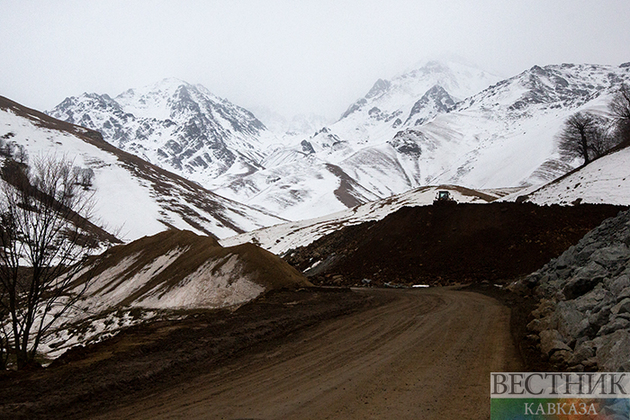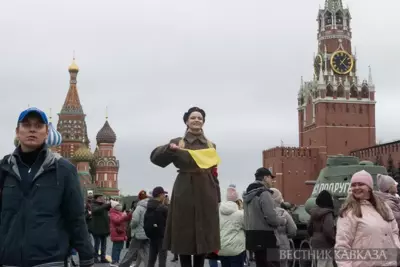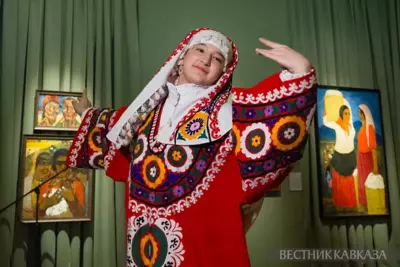Last year, a delegation from the Parliamentary Assembly of the Council of Europe (PACE) visited the formerly occupied territories of Azerbaijan. Its members were astonished at the destruction that took place over three decades of occupation.
The PACE delegation’s report, presented to PACE last September by Irish Senator Paul Gavan, is remarkably even-handed, Robert M. Cutler, a Fellow at the Canadian Global Affairs Institute, writes in the article for Geopolitical Monitor. It identified UNESCO as the agency that should begin an inventory of the cultural heritage and humanitarian losses of the region on both sides of the conflict. So there have been great hopes that UNESCO, which is indeed uniquely placed to do so, might play a significance role in peace-building in the South Caucasus.
In particular, Gavan recommended “that Armenia and Azerbaijan allow UNESCO unlimited access to all cultural heritage sites in both countries to assess the damage and assess the steps necessary to safeguard what remains.” Such an approach would mean that both countries allow UNESCO access across their entire territories. In a moral vote of confidence for this idea, the members of UNESCO elected both Armenia and Azerbaijan the organization’s Executive Board in November 2021. In a further vote of confidence to Azerbaijan, this country was also elected to serve on UNESCO’s Committee for the Protection of Cultural Property in the Event of Armed Conflict.
The possibility of such a UNESCO mission to both countries in the region was batted back and forth by diplomats for several months. Finally on February 4, during a video conference including Azerbaijan’s president Ilham Aliyev, France’s president Emmanuel Macron, the President of the Council of the EU Charles Michel, and Armenia’s prime minister Nicol Pashinyan, agreement was reached that a mission would be sent to both countries.
A week later, however, the Armenian ministry of foreign affairs was misrepresenting the agreement and seeking to eliminate the reciprocity that would have the UNESCO delegation visit Armenia as well as Azerbaijan. Armenia’s reneging on its commitment actually continues the policy of previous Armenian regimes, which prevented international missions from visiting the then-occupied Azerbaijani territories. In 2005, for example, Armenian interference prevented such a visit.
One example will convey the intricacy of the issues involved here. In early nineteenth century, ethnic Azerbaijanis were numerous—even the majority—across the territory of present-day Armenia, most of which comprises the former Irevan and Nakhchivan khanates of what is conventionally called the Persian Empire. During the period in question, however, indeed from 1789 to 1925, the empire was in fact ruled by the Turkic-speaking Qajar dynasty. Censuses carried out later in the century, after the khanates became part of the Russian Empire, provide demographic details. The Irevan and Nakhchivan khanates became part of Erivan and Elisabethpol Governates in the Russian Empire, after the Persian Empire ceded the territories following its defeat in the Russo-Persian Wars. (Elisabethpol city, capital of the corresponding governate, is now the Azerbaijani city of Ganja.)
It stands to reason, then, that there should be Azerbaijani cultural heritage throughout these regions. But the Armenian hesitation to welcome a UNESCO delegation onto its territory is understandable, if the Blue Mosque in Yerevan is any example. The Blue Mosque was constructed in the mid-eighteenth century by Huseynali Khan Qajar, the ruler of the Irevan khanate. The Soviets turned it into the Yerevan City Museum. After Armenian independence, Yerevan, with Iranian money, made stylistic architectural modifications and turned it into a cultural centre that is now is presented as an example of Iranian cultural influence in Armenia.
The problem with this is that the dynasty of Huseynali Khan Qajar, which ruled Irevan, was not Persian; rather, his tribe was a Turkic tribe, just as the Azerbaijanis are a Turkic people. So the conversion of the Blue Mosque into a supposed example of Iranian architecture and culture is an historical falsification that erases the historical Azerbaijani presence in present-day Armenia.
If this sort of thing is widespread, then it would be understandable why the Armenian government does not want UNESCO to document it officially. The past Turkic presence in present-day Armenia, however, is already documented books published in French, German, and other West European languages in the nineteenth century.
There is also extensive Russian-language anthropological, sociological and especially demographic work beginning from the time the region became part of the Russian Empire in the early nineteenth century. Just one of the innumerable examples is the Caucasus Calendar of 1870, in Russian, according to which (p.392) there were 269 mosques in the Irevan Governate and 156 in the Elisabethpol Governate. In the former Irevan Governate, only one mosque remains, the next-to-last one (Demirbulag Mosque in Yerevan) having been pulled down in 1990 in the course of the ethnic-cleansing riots that forced Azerbaijanis to flee from their homes in Yerevan, and elsewhere in Armenia, at that time.
It is of course possible that some of these mosques were demolished during the Soviet era. Then it would be necessary to consult archives to determine how much of the initiative was taken by Yerevan and how much by Moscow. And there are differences among “re-purposing” a building, reconstructing it (with or without attention to original style), and demolishing it.
But given the enormous—indeed, the inordinate—attention to these questions as regards religious structures in Karabakh and other formally occupied territories, and given Azerbaijan’s repeated statements over the decades of openness to participate in such a detailed scientific inventory of them on its own territory, it is equitable and necessary for peace-building, and the prosperity of future generations, that this be extended to the territory of Armenia.






